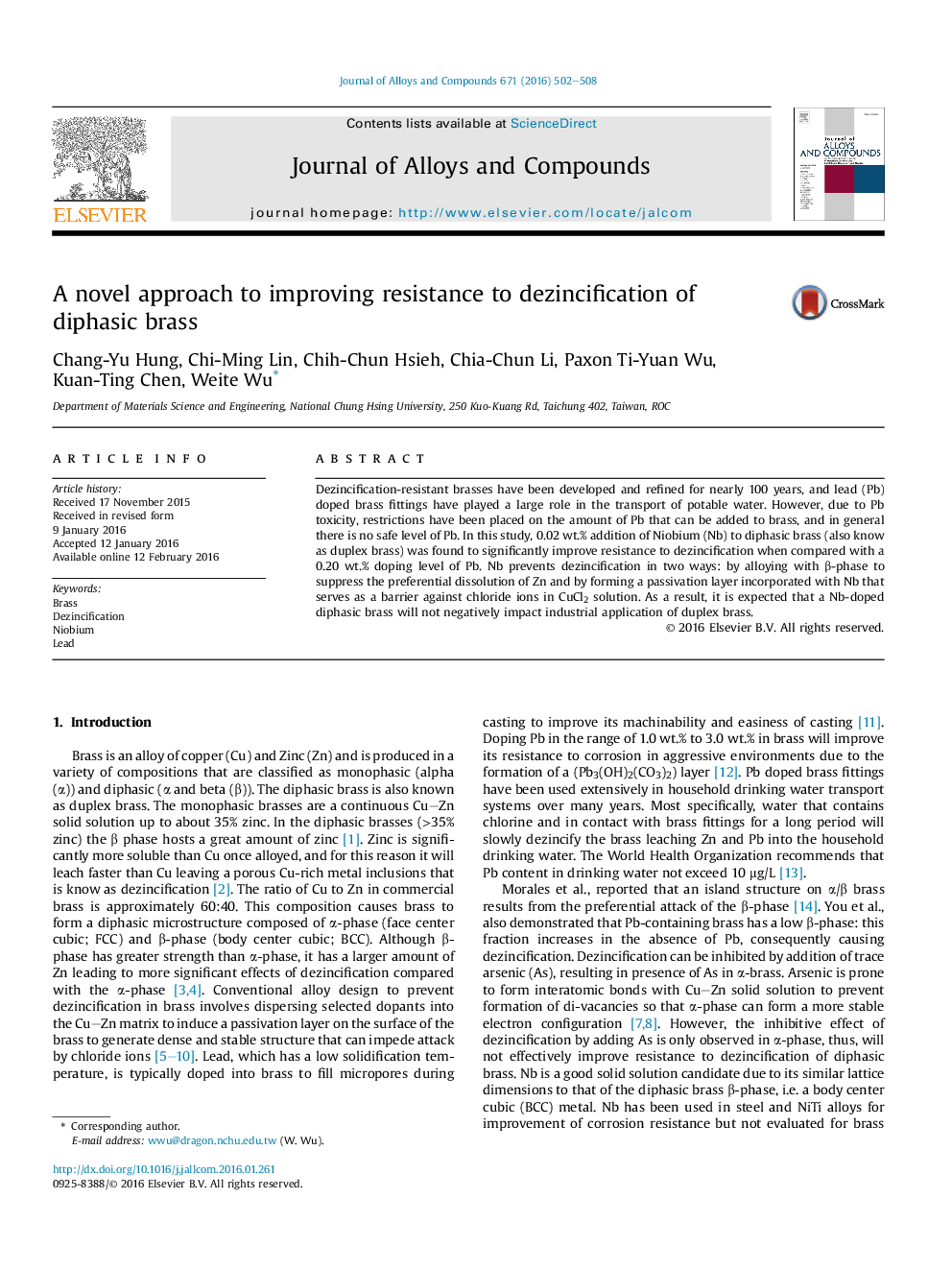| Article ID | Journal | Published Year | Pages | File Type |
|---|---|---|---|---|
| 1606074 | Journal of Alloys and Compounds | 2016 | 7 Pages |
Abstract
Dezincification-resistant brasses have been developed and refined for nearly 100 years, and lead (Pb) doped brass fittings have played a large role in the transport of potable water. However, due to Pb toxicity, restrictions have been placed on the amount of Pb that can be added to brass, and in general there is no safe level of Pb. In this study, 0.02 wt.% addition of Niobium (Nb) to diphasic brass (also know as duplex brass) was found to significantly improve resistance to dezincification when compared with a 0.20 wt.% doping level of Pb. Nb prevents dezincification in two ways: by alloying with β-phase to suppress the preferential dissolution of Zn and by forming a passivation layer incorporated with Nb that serves as a barrier against chloride ions in CuCl2 solution. As a result, it is expected that a Nb-doped diphasic brass will not negatively impact industrial application of duplex brass.
Keywords
Related Topics
Physical Sciences and Engineering
Materials Science
Metals and Alloys
Authors
Chang-Yu Hung, Chi-Ming Lin, Chih-Chun Hsieh, Chia-Chun Li, Paxon Ti-Yuan Wu, Kuan-Ting Chen, Weite Wu,
